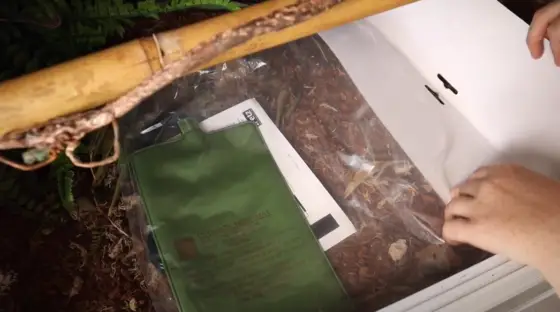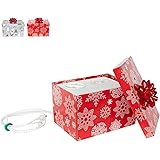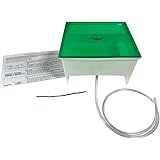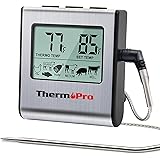Are you struggling to maintain the heat in your glass terrarium? Don’t worry, we’ve got you covered! In this article, we will provide you with practical tips on how to keep heat in your glass terrarium without any hassle.
Whether you’re a seasoned terrarium enthusiast or just starting out, these solutions will ensure that your plants and reptiles thrive in the perfect temperature. So, let’s dive right into the world of terrariums and discover how to keep the heat where it belongs – inside your glass terrarium!
How to Keep Heat in Glass Terrarium: Tips and Tricks
Glass terrariums make for stunning and captivating displays of nature’s beauty within the confines of your home. However, when it comes to maintaining the ideal temperature and ensuring the well-being of the plants and animals living inside, it can be a bit challenging. Glass, being a poor insulator, tends to lose heat quickly, which can be detrimental to the delicate ecosystem within the terrarium.
To help you overcome this hurdle, we’ve compiled a comprehensive guide on how to keep heat in a glass terrarium effectively. From insulation methods to heating options, let’s dive into the world of terrarium temperature management.
Understanding Terrarium Heat Requirements
Before we delve into the different techniques to maintain heat in a glass terrarium, it’s crucial to understand the heat requirements of the plants and animals housed within it. Different species have varying temperature needs, and it’s essential to ensure their well-being by providing an appropriate environment.
Conduct thorough research on the specific plants and animals in your terrarium to understand their temperature tolerance ranges. This knowledge will guide you in implementing the best heat retention strategies.
Optimizing Terrarium Placement
The placement of your glass terrarium plays a vital role in maintaining its heat levels. Consider these factors when deciding where to position your terrarium:
- Avoid direct sunlight:
While some heat is necessary, direct sunlight can cause excessive temperature fluctuations and potentially harm the plants and animals within the terrarium. Place the terrarium away from windows or direct sources of intense heat, such as heaters or radiators.
- Find a stable environment:
Choose a location that provides a stable ambient temperature throughout the day. Avoid areas with drafts or areas that are prone to significant temperature variations.
- Consider room temperature:
Keep in mind the average temperature of the room in which the terrarium is placed. Ensure it falls within the acceptable range for your specific plants and animals.
Read More: About Understand Swale vs French Drain
Insulating the Glass Terrarium
Insulating your glass terrarium is crucial to minimize heat loss. Here are some effective methods to consider:
- Styrofoam or cork lining:
Apply a layer of styrofoam or cork to the back and sides of the terrarium. These materials provide insulation by reducing heat transfer through the glass. Cut the insulation material to fit the dimensions of your terrarium, ensuring a snug and secure fit.
- Reflective insulation:
Install reflective insulation sheets on the outer portions of the terrarium. These sheets help bounce heat back into the enclosure, preventing it from escaping through the glass.
- Bubble wrap:
Wrap bubble wrap around the terrarium, paying particular attention to the sides and back. The air pockets within the bubble wrap act as thermal barriers, reducing heat loss.
- Insulated panels:
For larger or custom-sized terrariums, consider using specially designed insulated panels. These panels are made from materials that provide excellent heat retention properties.
Choosing the Right Heating Method
To maintain the ideal temperature within your glass terrarium, you may need to employ additional heating methods. Here are some options to consider:
- Heat mats or pads:
Heat mats or pads placed underneath the terrarium can provide consistent bottom heat. These are particularly beneficial for reptiles and plants that require warmth from below.
- Ceramic heat emitters:
Ceramic heat emitters are suitable for reptiles and can emit a steady heat source without light. These emitters can be safely mounted inside the terrarium or attached to the top.
- Heat lamps:
Heat lamps are another option, especially for plants that require more light alongside heat. Ensure the lamp is positioned at a safe distance from the terrarium to prevent overheating.
- Radiant space heaters:
If your terrarium is located in a room that requires overall heating, a small radiant space heater can help maintain an appropriate temperature. Ensure the heater is placed at a safe distance and monitored closely.
Monitoring and Adjusting Temperature
Regularly monitoring the temperature within your glass terrarium is crucial for the well-being of its inhabitants. Here are some tips for temperature monitoring:
- Thermometers:
Invest in digital thermometers for accurate temperature readings. Place thermometers at different heights within the terrarium to ensure even heat distribution.
- Thermostats:
Use thermostats with heating devices to regulate the temperature. Set the thermostat to the desired temperature range and monitor it regularly.
- Adjustments and fine-tuning:
Based on the temperature readings, make necessary adjustments to the heating methods used. Observe the plants and animals closely for any signs of discomfort or stress caused by temperature fluctuations.
Read More: About How Fast Do Rubber Plants Grow? Exploring Growth Rates
Achieving a Balanced Microclimate
Creating a balanced microclimate within your glass terrarium involves considering various factors beyond just heat retention. Here are some additional elements to pay attention to:
- Humidity levels:
Some species require specific humidity levels to thrive. Invest in a hygrometer to monitor and adjust humidity as needed. Consider using a mister or a humidifier to maintain optimal levels.
- Ventilation:
Proper airflow is crucial within a closed terrarium. Ensure there is adequate ventilation to prevent the buildup of excess heat or humidity.
- Landscaping and materials:
Opt for materials within the terrarium that can retain heat, such as stones, rocks, or soil. These elements help create microclimates and provide additional insulation.
- Plant positioning:
Arrange heat-sensitive plants away from direct heat sources, ensuring they receive enough warmth without being exposed to excessive heat.
By implementing these techniques and addressing the specific needs of your glass terrarium’s inhabitants, you can create a stable and comfortable environment that retains heat effectively.
Remember, maintaining stable heat levels is fundamental for the overall health and well-being of the plants and animals within your glass terrarium. Regular monitoring, adjustments, and an understanding of the specific requirements of your terrarium’s ecosystem are keys to success.
With these tips and tricks, you’ll be able to provide the perfect environment for your terrarium’s inhabitants to thrive.
Frequently Asked Questions (FAQs)
For a glass terrarium, you can use a heat mat or a ceramic heat emitter as a heat source. Both options are safe for glass enclosures.
The heat source should be placed on one side of the terrarium to create a temperature gradient. This allows your reptile or plant to regulate its body temperature by moving to different areas of the enclosure.
Yes, it is essential to use a thermostat with the heat source in your glass terrarium. A thermostat will help maintain a consistent temperature and prevent overheating.
You can use a digital thermometer or a temperature gun to monitor the temperature inside the glass terrarium. Regularly check the temperature to ensure it is within the appropriate range for your reptile or plant.
Yes, covering the top of the glass terrarium with a lid or mesh can help retain heat. This prevents heat from escaping and maintains a warm environment for your reptile or plant.
The ideal temperature range for a glass terrarium depends on the specific needs of your reptile or plant. Generally, a temperature range of 75-85°F (24-29°C) is suitable for most reptiles, while tropical plants may require slightly higher temperatures.
No, it is not recommended to use heating rocks in a glass terrarium. Heating rocks can pose a risk of burns to your reptile or plant and may not distribute heat evenly.
If the glass terrarium becomes too hot, you can adjust the temperature by lowering the wattage of the heat source, moving it further away from the enclosure, or using a dimming thermostat. Additionally, ensure proper ventilation to dissipate excess heat.
Final Thoughts
To effectively keep heat in a glass terrarium, there are several key steps you can take. Firstly, ensure that the terrarium is placed in a warm location, away from drafts or cold windows. Secondly, choose heat-resistant materials such as glass or acrylic for the terrarium construction, which will help retain heat more efficiently.
Additionally, consider using heating mats or lamps specifically designed for terrariums to provide consistent warmth. Lastly, regularly monitor the temperature inside the terrarium using a thermometer to ensure it remains within the ideal range for your plants or animals. By following these guidelines, you can successfully maintain the desired warmth in your glass terrarium.
Auto Amazon Links: No products found.
Perfect Plants Christmas Tree Saver 8oz. | Easy Use Xmas Tree Preserver Food | Have Healthy Green Christmas Trees All Holiday Season
$9.97 (as of November 26, 2025 23:26 GMT +00:00 - More info- Product prices and availability are accurate as of the date/time indicated and are subject to change. Any price and availability information displayed on [relevant Amazon Site(s), as applicable] at the time of purchase will apply to the purchase of this product.
Wilt-Pruf® Christmas Tree/Cutting Preserver Spray |Preserves Christmas Trees, Wreaths, Garlands, Cuttings and Carved Pumpkins | Reduces Needle Drop | Keeps Cut Trees Fresh Longer | Natural (32 oz)
$21.99 (as of November 26, 2025 23:26 GMT +00:00 - More info- Product prices and availability are accurate as of the date/time indicated and are subject to change. Any price and availability information displayed on [relevant Amazon Site(s), as applicable] at the time of purchase will apply to the purchase of this product.
Christmas Tree Watering Funnel – 39 Inch Adjustable 3-Section Design, Reusable & Spill-Free, Easy Watering for Real Christmas Trees
$13.88 (as of November 26, 2025 23:26 GMT +00:00 - More info- Product prices and availability are accurate as of the date/time indicated and are subject to change. Any price and availability information displayed on [relevant Amazon Site(s), as applicable] at the time of purchase will apply to the purchase of this product.
HoHoHoH2o Automatic Christmas Tree Watering System Device, Santa’s Tree Helper Keeps Your Christmas Tree Healthy and Fresh, Refillable 2.5 gallons Capacity Box - Red/Snowflakes
$99.95 (as of November 26, 2025 23:26 GMT +00:00 - More info- Product prices and availability are accurate as of the date/time indicated and are subject to change. Any price and availability information displayed on [relevant Amazon Site(s), as applicable] at the time of purchase will apply to the purchase of this product.
Automatic Christmas Tree Watering System | Reduce Needle Loss | Never Have a Dry Stand | Evergreen Helper® | US Patent 12,102,249
$28.49 (as of November 26, 2025 23:26 GMT +00:00 - More info- Product prices and availability are accurate as of the date/time indicated and are subject to change. Any price and availability information displayed on [relevant Amazon Site(s), as applicable] at the time of purchase will apply to the purchase of this product.
ThermoPro TP16 Large LCD Digital Cooking Food Meat Thermometer for Smoker Oven Kitchen BBQ Grill Thermometer Clock Timer with Stainless Steel Temperature Probe
$17.99 (as of November 26, 2025 14:50 GMT +00:00 - More info- Product prices and availability are accurate as of the date/time indicated and are subject to change. Any price and availability information displayed on [relevant Amazon Site(s), as applicable] at the time of purchase will apply to the purchase of this product.
Zevo Flying Insect Trap Official Refill Cartridges - Fits Both Zevo Trap & MAX Indoor Fly Trap - Authentic Trap+Lock Technology to Catch Gnats, House & Fruit Flys (4 Official Refill Cartridges)
$13.47 (as of November 26, 2025 14:50 GMT +00:00 - More info- Product prices and availability are accurate as of the date/time indicated and are subject to change. Any price and availability information displayed on [relevant Amazon Site(s), as applicable] at the time of purchase will apply to the purchase of this product.
Victor Mouse Traps M150-12, Metal Pedal, Sustainably Sourced FSC Wood, Wooden Mouse Traps, 12 Metal Pedal Traps
$9.79 (as of November 26, 2025 14:50 GMT +00:00 - More info- Product prices and availability are accurate as of the date/time indicated and are subject to change. Any price and availability information displayed on [relevant Amazon Site(s), as applicable] at the time of purchase will apply to the purchase of this product.
Zevo Flying Insect Trap & 3 Refill Cartridges - Plug in Fly Trap & Indoor Bug Catcher for Gnats, House & Fruit Flies - Blue & UV Light Technology, Mess-Free Alternative to Bug Zapper
$25.96 (as of November 26, 2025 14:50 GMT +00:00 - More info- Product prices and availability are accurate as of the date/time indicated and are subject to change. Any price and availability information displayed on [relevant Amazon Site(s), as applicable] at the time of purchase will apply to the purchase of this product.
TERRO Ant Killer Bait Stations T300B - Liquid Bait to Eliminate Ants - Bait System - 12 Count Stations for Effective Indoor Ant Control
$10.86 (as of November 26, 2025 14:50 GMT +00:00 - More info- Product prices and availability are accurate as of the date/time indicated and are subject to change. Any price and availability information displayed on [relevant Amazon Site(s), as applicable] at the time of purchase will apply to the purchase of this product.











